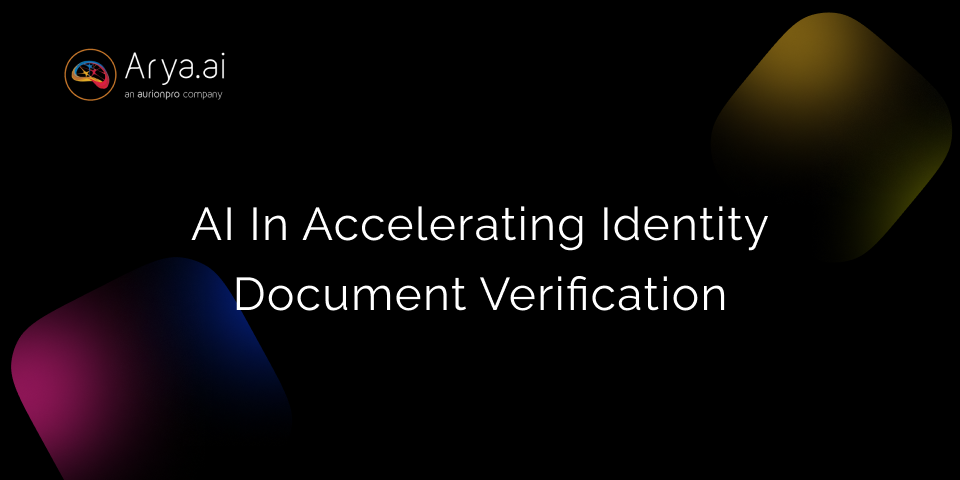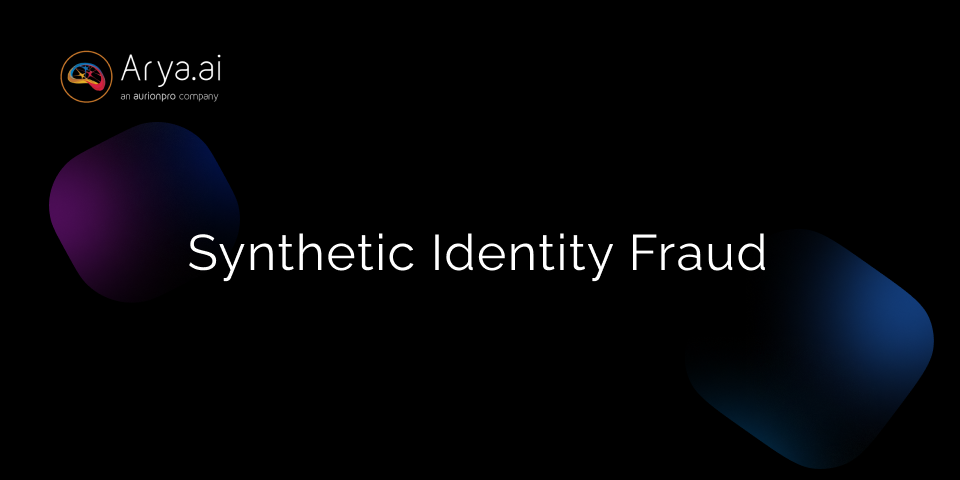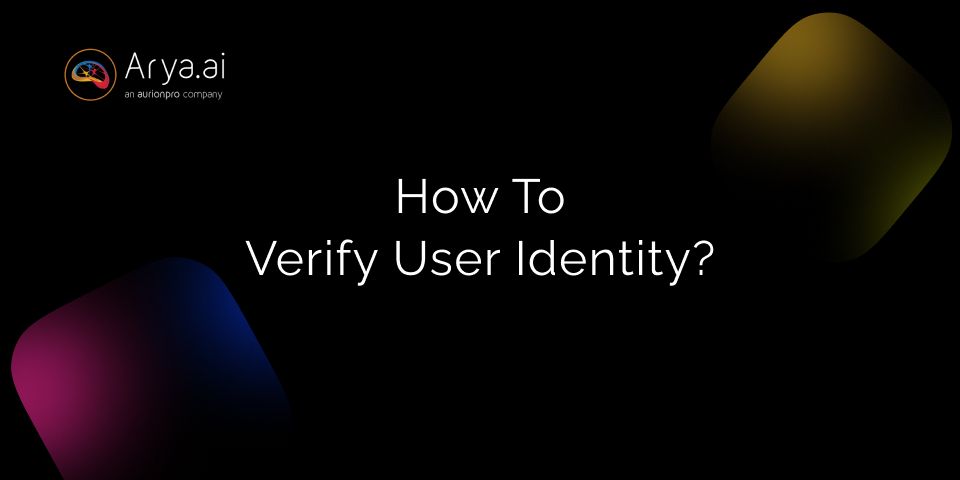In an increasingly digital world, the demand for robust and efficient AI identity verification solutions has never been more critical. With the global identity verification market expected to reach an astounding $23.49 billion by 2029, spurred by the rapid digitization of services across various sectors, businesses and governments are under immense pressure to ensure that the individuals they engage with are who they claim to be.
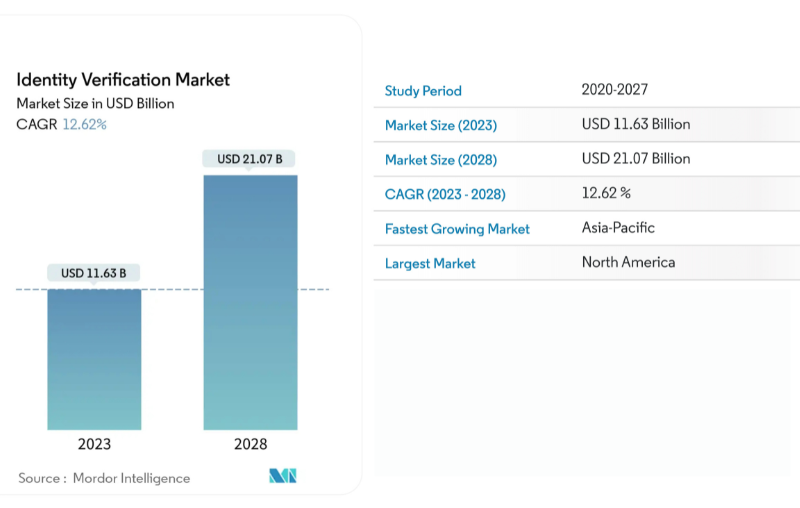
Traditional methods of identity verification involve manual checks, which are time-consuming and prone to errors and fraud. These outdated practices struggle to keep up with the latest tactics used by modern fraudsters.
However, AI in Identity Document Verification (IDV), powered by deep learning, computer vision, and natural language processing, can quickly and accurately authenticate documents, detect anomalies, and flag potential fraud—all in real-time.
This blog will explore how AI is revolutionizing identity verification, giving insights into the technologies driving this change and real-world examples of its impact across the BFSI sector.
AI in Identity Document Verification
AI in identity document verification involves using artificial intelligence to automate, accelerate, and enhance the process of confirming a person's identity based on the information provided on their documents. This technology uses sophisticated algorithms to analyze documents, extract relevant data, verify information, and detect potential document fraud, all with a high degree of accuracy and speed.
In essence, AI transforms the traditionally manual and time-consuming task of identity verification into a streamlined, efficient, and secure digital process.
The Mechanics of AI-Powered Identity Document Verification
AI-powered identity document verification systems work through a series of processes that transform raw data into actionable insights. Here’s how AI processes identity documents:
1. Data Collection and Preprocessing:
AI in identity document verification can handle various document formats, like PDFs, JPGs, and PNGs, ensuring flexibility in how your customers or clients submit their documents. These documents then undergo preprocessing to standardize the data. Preprocessing addresses issues like variations in document quality, format, and structure. It includes resizing, noise reduction, and contrast enhancement, which help in creating a consistent input for the AI algorithms.
2. Intelligent Document Processing (IDP):
Traditional OCR (Optical Character Recognition) technology has long been used to extract text from documents, but it has limitations, especially with complex document formats like government-issued id cards and passports. Intelligent Document Processing is a more advanced form of document processing, that uses AI to extract, understand and categorize the data contextually.
For example, when processing a passport, IDP doesn’t just pull out the text; it finds and labels each field (e.g., name, passport number, nationality) according to its relevance. Arya AI's tools, such as KYC Extraction Tool, go beyond simple text extraction by integrating these advanced capabilities, which ensures that the data is both accurate and contextually appropriate.
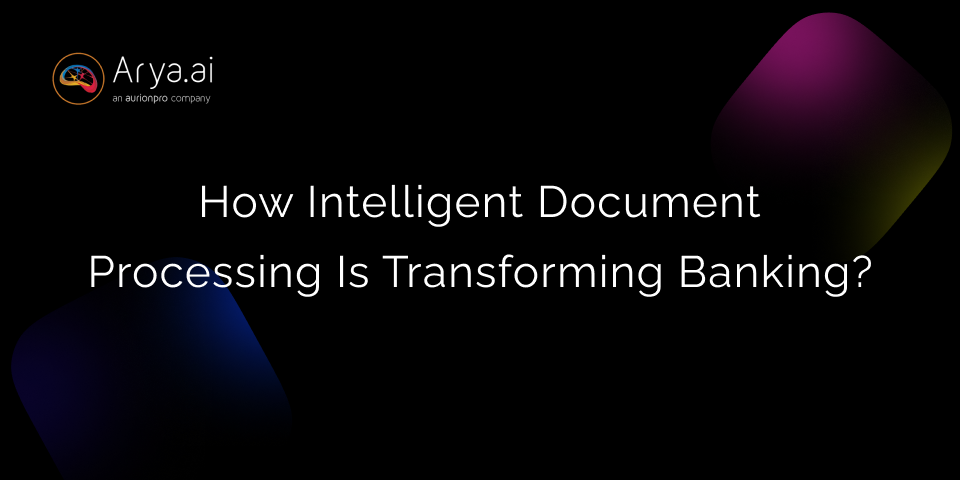
3. Real-Time Verification and Automation:
One of the significant advantages of AI in identity document verification is its ability to operate in real time. Once the document has been processed and the data extracted, AI systems can perform instant verification by cross-referencing the data with existing records, such as government databases or previous submissions.
This automated process drastically reduces the time required for verification, from days to just a few seconds. Moreover, automation minimizes the need for manual intervention, which not only speeds up the process but also reduces the likelihood of human error. The result is a highly efficient and reliable verification process allowing businesses to onboard customers quickly and securely.
Key Technologies Behind AI in Identity Document Verification
Computer Vision, Natural Language Processing (NLP), and Biometric Verification are the backbone of AI-powered verification solutions, each playing a crucial role in authenticating identity documents.
1. Computer Vision:
Computer Vision allows AI to analyze visual elements of documents, such as logos, seals, and photographs. It can detect inconsistencies by comparing these elements against a database of legitimate documents, making it a powerful tool for spotting forgeries and deepfake detection. For instance, in a passport verification process, Computer Vision can detect the presence of a country’s seal, the specific design of the passport, and even the authenticity of the photograph. Deep learning enhances this capability, improving accuracy over time.
2. Natural Language Processing (NLP):
NLP handles textual data, ensuring accurate extraction and interpretation of information like names and addresses. By understanding context, NLP reduces errors, even with unstructured text or cultural name variations. Also, NLP is adept at extracting information from unstructured text fields, making it invaluable in situations where data is not well formatted.
3. Biometric Verification Integration:
Biometric Verification adds a layer of security to the identity verification process by incorporating physiological data, such as facial recognition, liveness detection, fingerprint scanning, or iris recognition. This technology is particularly effective in preventing identity fraud, as biometric data is unique to each individual and difficult to replicate.
Benefits of AI-Powered Identity Document Verification
AI-powered identity document verification offers several distinct advantages for financial institutions and their customers.
- Faster Verification Times: By automating document classification and analysis, data extraction, and verification processes, AI significantly reduces processing times. This eases customer onboarding, improves your organization’s operational efficiency, and enhances your customers’ satisfaction.
- Enhanced Accuracy and Reduced Fraud: AI's ability to analyze vast datasets and find complex patterns enables it to detect fraudulent identity documents with unprecedented accuracy. This reduces the risk of identity theft, protects your institution's reputation, and safeguards customer assets.
- Improved Customer Experience: Streamlined identity verification processes create a smoother and more convenient onboarding experience for customers. Reduced paperwork, faster processing times, and fewer manual interventions all help increase your customer satisfaction and loyalty.
- Cost Efficiency: AI-powered automation eliminates the need for manual labour intensive tasks, resulting in significant cost savings. Also, reduced error rates and faster processing times contribute to better operational efficiency.
Role of AI-Powered Identity Document Verification Solutions in Fraud Prevention
When an identity document, like a passport or driver's license, is submitted for verification, AI-powered systems can scrutinize every element of the document. These systems detect signs of tampering or forgery by comparing visual and textual elements against a vast database of authentic documents. Any inconsistencies, such as mismatched fonts, irregular spacing, or altered logos and seals, are flagged by the AI. This reveals forgeries that would slip past human examiners.
Moreover, AI enhances fraud detection and prevention by using anomaly detection algorithms that can identify suspicious patterns across large datasets. In identity verification, this might involve recognizing unusual submission behaviours, like multiple attempts to verify identities from a single IP address or patterns in biometric data that don’t match known profiles. If an AI system detects that the same face is being used in multiple identity verification attempts with different names, it can flag this as a potential fraud attempt.
Deep Learning models are trained on massive datasets of both legitimate and fake documents, helping them to find even the most subtle signs of fraud. For instance, AI can detect if a passport’s Machine-Readable Zone (MRZ) has been altered, by comparing it to a database of authentic MRZ formats. The system can also assess whether the document’s photo matches the person attempting to verify their identity, using face verification technology to spot discrepancies that suggest identity theft.
AI in identity document verification systems also improves fraud prevention by integrating biometric verification. By cross-referencing facial recognition data with submitted documents, AI systems add an extra layer of security, to make sure that the person presenting the document is indeed the rightful owner.
Integrating AI into Existing Identity Document Verification Systems
Use the following guide to integrate AI into existing Identity Document Verification (IDV) systems within your BFSI sector:
- Modular Integration: By breaking down the verification process into specific components, such as image recognition, text extraction, and biometric verification, your financial institution can incrementally introduce AI without overhauling the entire system. This modular approach gives you the options for flexibility and scalability while providing gradual improvements in accuracy and speed.
- API and Cloud-Based Solutions: Using APIs (Application Programming Interfaces), like those of Arya AI, is a key strategy for integrating AI capabilities into your legacy systems. AI-powered Identity Document Verification providers offer API solutions that can be plugged into existing infrastructures. These APIs ease document scanning, liveness detection, and face comparison without needing significant changes to your core systems. As cloud-based AI services can handle heavy computational tasks, they’re easier to implement and manage.
- Compliance and Security: AI integration must align with existing regulatory frameworks, especially in the BFSI sector, where compliance with KYC (Know Your Customer) and AML (Anti-Money Laundering) regulations is crucial. AI-driven systems should enhance your organization's compliance with more accurate and reliable identity verification. This helps in meeting regulatory requirements by incorporating features like audit trails, data encryption, and secure API connections to protect the sensitive information of your customers.
- Data Enrichment and Machine Learning: Adding AI to your identity verification systems also means that you’ll be adding to the existing datasets with external data sources to improve the accuracy of verification processes. You can train machine learning models on a combination of internal and external data to better recognize and flag suspicious activities or fraudulent documents.
- User Experience for your Customers: The AI components for verification should be designed to work seamlessly in the background, providing fast and accurate verification results without adding complexity to the user interface. This helps customers have a smooth onboarding process.
How Arya AI Helps with Identity Document Verification?
With advanced deep learning models and specialized AI technologies, Arya AI provides tools designed to tackle the most pressing challenges in identity verification, from ensuring the authenticity of documents to preventing fraud attempts. Below are some of the key technologies from Arya AI that help your organization in identity document verification.
AI's effectiveness in document verification largely depends on deep learning algorithms that have been trained on vast datasets. These models recognize patterns and classify documents accurately.
➡ Passive Face Liveness Detection: Facial recognition is a critical aspect of identity verification, but it’s not enough to simply recognize a face; the system must also ensure that the face is real and live at the moment of capture.
Arya AI’s Passive Face Liveness Detection App is designed to detect whether the image being used is of a live person or a spoof (e.g., a photo or video of someone else). This technology operates in the background without requiring your customer to perform any actions. The system assesses subtle biometric cues that are difficult to replicate in a static image or pre-recorded video, making it highly effective at preventing fraud.
➡ Face Verification: Once liveness is confirmed, the next step is to verify the face against a reference image, usually provided during account creation or onboarding.
Arya AI’s Face Verification App is highly accurate and capable of matching faces even under challenging conditions, such as varying lighting or slight changes in appearance. The API compares the live image with the stored reference image, using deep learning models trained on vast datasets to ensure high accuracy in matching. This step is crucial in confirming that the person attempting to verify their identity is indeed who they claim to be.
➡ Document Fraud Detection: One of the most sophisticated threats in identity verification today is document frauds.
Arya AI's Document Fraud Detection tool is designed to counter this threat. It uses its advanced algorithms to meticulously analyze the submitted documents and helps you eliminate the possibility of fraud. Arya’s advanced AI has already analyzed over 25 million documents, offering reliable results that help minimize the risk of fraud slipping through.
Conclusion
The integration of AI into identity document verification systems has transformed the BFSI sector, addressing critical challenges like fraud prevention, regulatory compliance, and customer onboarding. AI-driven solutions have proven their ability to enhance the speed, accuracy, and security of identity verification processes.
The adoption of AI in identity document verification is necessary for financial institutions to stay competitive in this increasingly digital and fraud-prone environment. The reduced verification times, enhanced accuracy, and improved customer experiences, make it a powerful tool for modernizing identity verification systems in your organization. It also helps your industry meet regulatory compliance and customer expectations.
Financial institutions that embrace AI for identity document verification now will protect themselves and their customers from the threats of fraud while reaching new levels of operational efficiency and customer trust.
To find out how Arya AI can help your organization enhance its identity document verification systems, visit our website and discover our AI-powered solutions that are shaping the future of digital identity verification.

